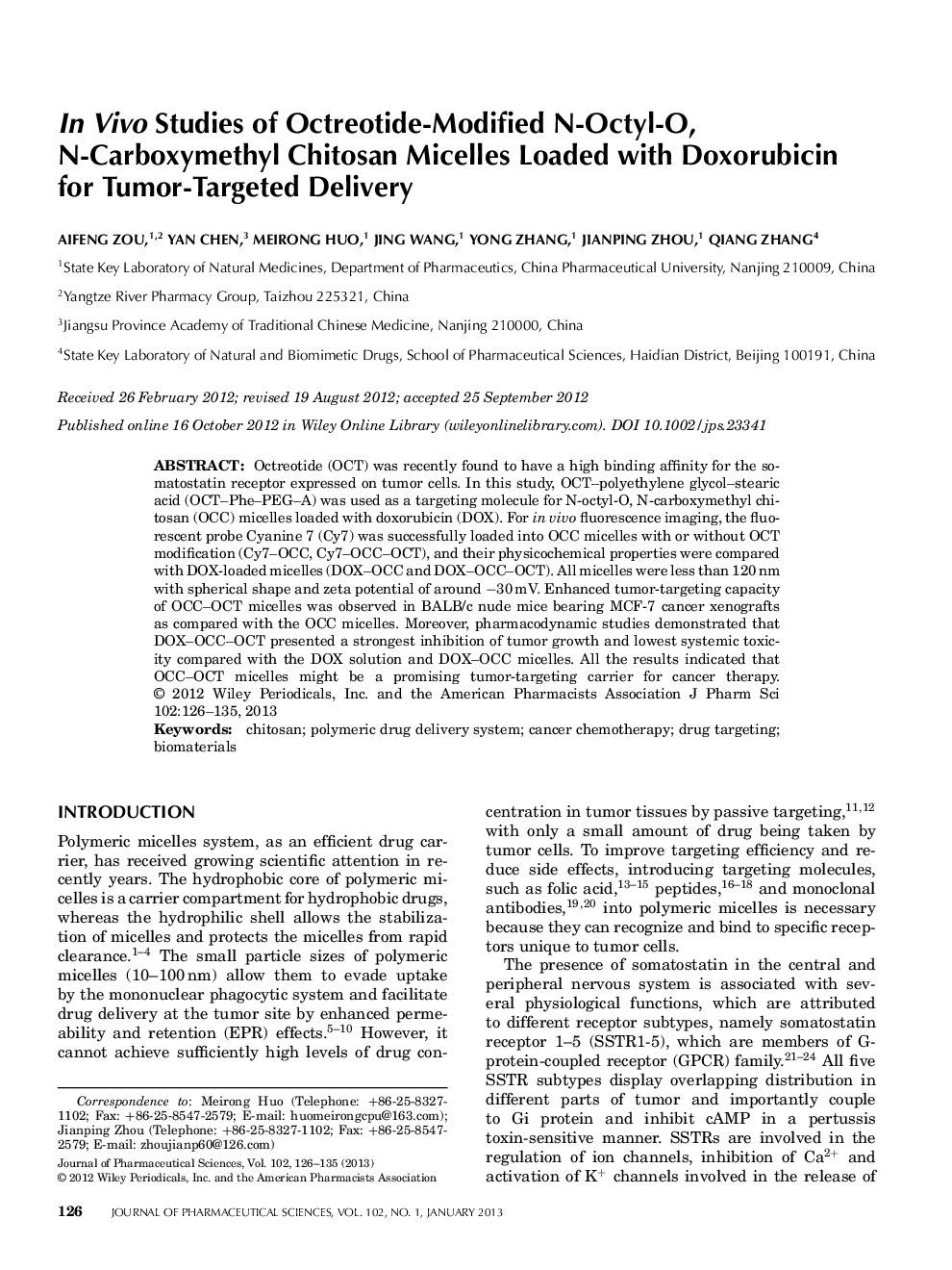| Article ID | Journal | Published Year | Pages | File Type |
|---|---|---|---|---|
| 2485444 | Journal of Pharmaceutical Sciences | 2013 | 10 Pages |
Abstract
Octreotide (OCT) was recently found to have a high binding affinity for the somatostatin receptor expressed on tumor cells. In this study, OCT-polyethylene glycol-stearic acid (OCT-Phe-PEG-A) was used as a targeting molecule for NâoctylâO, Nâcarboxymethyl chitosan (OCC) micelles loaded with doxorubicin (DOX). For in vivo fluorescence imaging, the fluorescent probe Cyanine 7 (Cy7) was successfully loaded into OCC micelles with or without OCT modification (Cy7-OCC, Cy7-OCC-OCT), and their physicochemical properties were compared with DOXâloaded micelles (DOX-OCC and DOX-OCC-OCT). All micelles were less than 120Â nm with spherical shape and zeta potential of around â30Â mV. Enhanced tumorâtargeting capacity of OCC-OCT micelles was observed in BALB/c nude mice bearing MCFâ7 cancer xenografts as compared with the OCC micelles. Moreover, pharmacodynamic studies demonstrated that DOX-OCC-OCT presented a strongest inhibition of tumor growth and lowest systemic toxicity compared with the DOX solution and DOX-OCC micelles. All the results indicated that OCC-OCT micelles might be a promising tumorâtargeting carrier for cancer therapy.
Related Topics
Health Sciences
Pharmacology, Toxicology and Pharmaceutical Science
Drug Discovery
Authors
Aifeng Zou, Yan Chen, Meirong Huo, Jing Wang, Yong Zhang, Jianping Zhou, Qiang Zhang,
